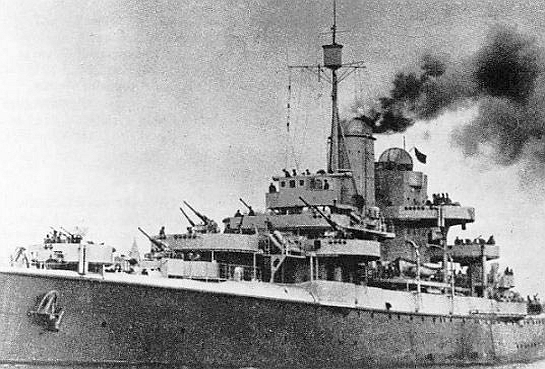-
Posts
3,441 -
Joined
-
Last visited
Content Type
Profiles
Forums
Gallery
Events
Everything posted by amateur
-
you flipped her over, cranes are on the starboard side
-
four sisters, how on earth should we decide which one you encountered .... (she' sbuilding an offshore windmill park, by the looks of it ; ) Jan
-
flip and google Jan
-
hmmmm... four masted barque, 1880. Lots to choose from Jan
-
For the record: I mirrored it to gain some time. It is indeed Gelderland as refitted by the Germans into Niobe. Jan
-
-
I did a check: in 1970/71/72, Van Beylen did a number of articles in De Modelbouwer (monthly journal issued by the NVM) on building a botter. This series is now (slightly) editied and issued as a booklet by Lanasta. Jan
-
spirit of chartwell
-
golden jubilee, barge, spirit of something, I'll be back in a minute
-
Ha, Andy-stuff again Jan
-
I suggest that Dafi will also do a 'cleared for action' version of Vic. Same man but ready for battle. Next there will be a version 'Vic by night', all men in their hammocks (apart from the men of the watch, that is) Jan
-
The cabin is not found by Google.... There should be hundreds of these around: every line and liner had such pics around. (recently saw quite a bunch of these from the HAL) But perhaps we should consider giving Anja a go, before wandering off in all (albeit interesting) directions? Jan
-
The round holes in the ice do give it away, otherwise it is just like the real thing! You did not go for a couple of iron-capped mooring poles? Probably you're right: given the size of the ships, that may be overkil Jan
-
Robbyn, you're outvoted on the paint. On this side of the room we all like the painted version. Jan
- 234 replies
-
- 18th century longboat
- model shipways
-
(and 1 more)
Tagged with:
-
I did not know that rubber duckies had a name (it's Dutch btw) Jan
-
That would be great! If the scale is not in the 1:48 range, I would certainly consider buying. There is a set of drawings around from the Lelystad Werf were they do the replica (Drazen is using that set for building is model of the ZP) btw: this painting is also coming from Lelystad, it is an artist impression of the replica afloat. Jan
-
Figured that one out after realizing that there was more than one ship involved.... Jan
-
The present dykes (both height and slope) are not representative for the period you are displaying: after the floods in 1916 and 1953 there were reforms in the design of the Dutch dykes, leading to higher dykes, and less steep slopes. (the so-called deltadijken) These changes affected both river- and sea-dykes. Before the 1916-flood, some dykes were not higher than 3 meters above normal water levels (NAP). Jan
-
I never intended to put you in any kind of dilemma. Your brickwork is far too good to destroy! For those wanting to know why the mooring posts are that high: before the closure of the Zuiderzee (now IJsselmeer), even a far-in land harbour Volendam had a tidal range of half a meter, with the level of the tide differing aroudn the year (depending on the tidal waters and wind derection in the North see. Jan
About us
Modelshipworld - Advancing Ship Modeling through Research
SSL Secured
Your security is important for us so this Website is SSL-Secured
NRG Mailing Address
Nautical Research Guild
237 South Lincoln Street
Westmont IL, 60559-1917
Model Ship World ® and the MSW logo are Registered Trademarks, and belong to the Nautical Research Guild (United States Patent and Trademark Office: No. 6,929,264 & No. 6,929,274, registered Dec. 20, 2022)
Helpful Links
About the NRG
If you enjoy building ship models that are historically accurate as well as beautiful, then The Nautical Research Guild (NRG) is just right for you.
The Guild is a non-profit educational organization whose mission is to “Advance Ship Modeling Through Research”. We provide support to our members in their efforts to raise the quality of their model ships.
The Nautical Research Guild has published our world-renowned quarterly magazine, The Nautical Research Journal, since 1955. The pages of the Journal are full of articles by accomplished ship modelers who show you how they create those exquisite details on their models, and by maritime historians who show you the correct details to build. The Journal is available in both print and digital editions. Go to the NRG web site (www.thenrg.org) to download a complimentary digital copy of the Journal. The NRG also publishes plan sets, books and compilations of back issues of the Journal and the former Ships in Scale and Model Ship Builder magazines.




